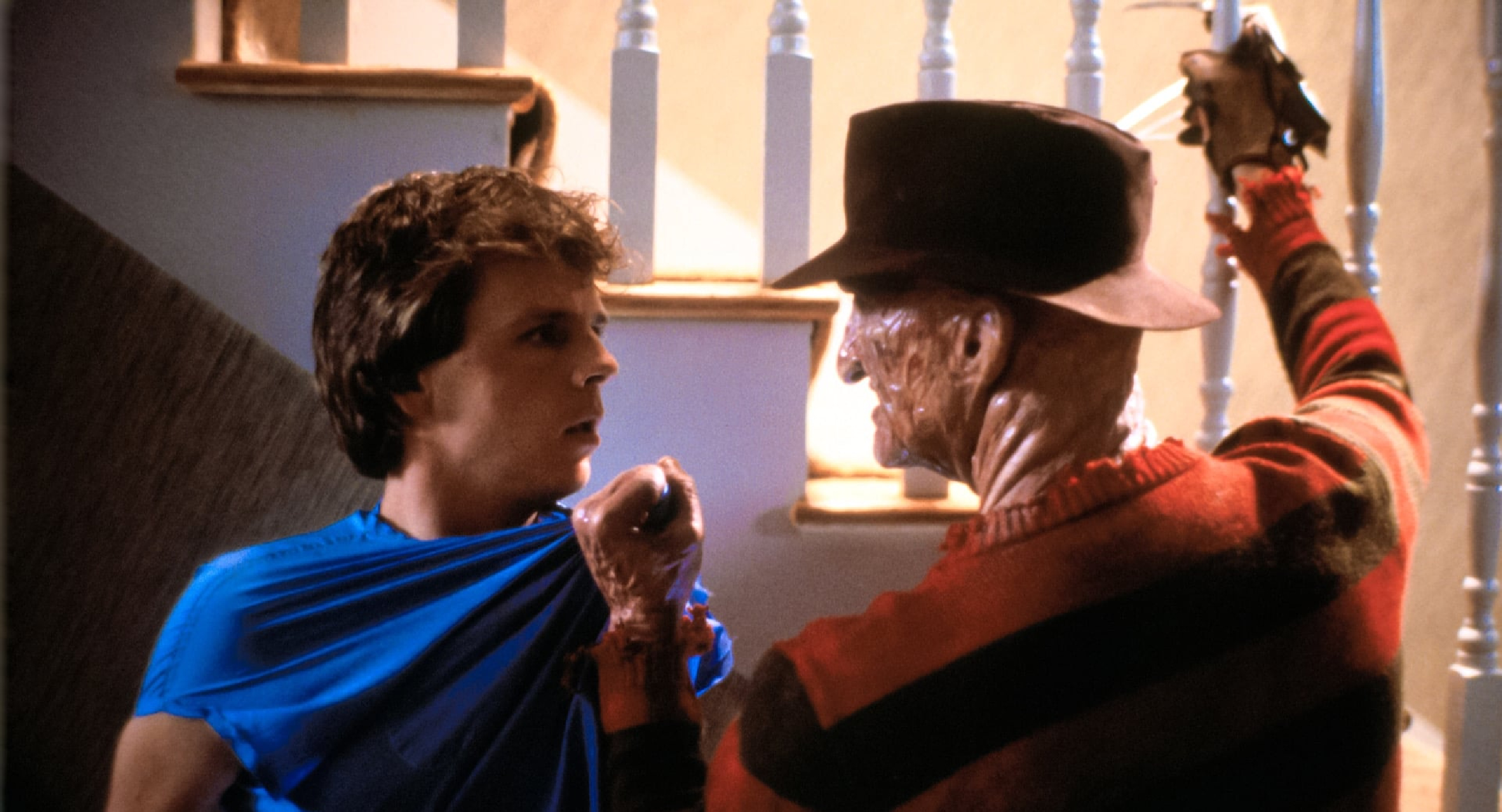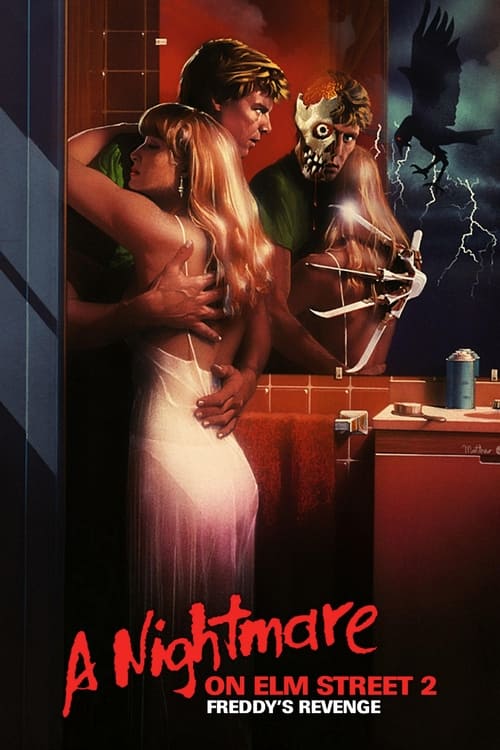A Nightmare on Elm Street 2: Freddy’s Revenge – Film Review
Published September 5, 2023

Jesse Walsh moves with his family into the home of the lone survivor from a series of attacks by dream-stalking monster Freddy Krueger. There, Jesse is bedeviled by nightmares and inexplicably violent impulses. It turns out Freddy needs a host body to carry out his gruesome vendetta against the youth of Springwood, Ohio. While Freddy gains influence, Jesse and his girlfriend, Lisa, race against the clock trying to figure out what’s going on.
Released in 1985, A Nightmare on Elm Street 2: Freddy’s Revenge, directed by Jack Sholder, is a polarizing entry in the iconic horror franchise. While not as universally acclaimed as its predecessor, this film deserves a closer look for its unique take on the nightmare-inducing killer, Freddy Krueger, and the unconventional narrative it weaves. Freddy’s Revenge strays from the formula of the original, offering a more psychological and metaphorical exploration of fear, identity, and sexuality. This review will delve into the film’s strengths and weaknesses, its subtextual layers, and its place within the Elm Street saga.
The plot of Freddy’s Revenge centers on Jesse Walsh (played by Mark Patton), who moves into the infamous Elm Street house after the events of the first film. Soon, Jesse becomes plagued by nightmares featuring Freddy Krueger (Robert Englund), who attempts to possess his body to continue his murderous rampage in the real world.
The character development in this installment differs significantly from its predecessor. Instead of focusing solely on the final girl, as seen in the original Nightmare on Elm Street, we witness Jesse’s internal struggle as he grapples with his inner demons and repressed desires. Mark Patton delivers a strong performance, portraying Jesse’s increasing fear and inner turmoil effectively.
What sets Freddy’s Revenge apart from the other films in the franchise is its rich subtext and metaphorical layers. It’s widely regarded as a queer subtextual narrative, with Jesse’s character struggling with his sexuality. The possession by Freddy can be interpreted as a metaphor for Jesse’s struggle to accept his identity, and the fear of losing control mirrors the fear of coming out in a hostile environment.
The film’s most famous scene, featuring a dance club, is a masterful representation of this subtext. It combines elements of horror and sexuality, showcasing the film’s exploration of repressed desires. Freddy’s presence in Jesse’s life becomes synonymous with his struggle to be himself, making for a unique and thought-provoking take on the horror genre.
Freddy Krueger as a character also undergoes a transformation in this film. He’s portrayed as more sinister and seductive, which adds a layer of psychological terror to his character. His desire to escape the dream world and enter the real one through Jesse creates an unsettling dynamic between the two characters.
Jack Sholder’s direction and Jacques Haitkin‘s cinematography give Freddy’s Revenge a distinct visual style. The use of dark, moody lighting and surreal dream sequences intensify the film’s eerie atmosphere. The practical effects, especially the body horror elements, are commendable and still hold up today. Freddy’s appearance is as menacing as ever, with his iconic glove making regular appearances to deliver gruesome kills.
Christopher Young‘s score contributes significantly to the film’s unsettling atmosphere. The haunting, synth-heavy music enhances the sense of dread and unease, effectively underscoring the nightmarish sequences. The sound design also deserves praise, as it plays a crucial role in building tension and creating jump scares that catch the audience off guard.
A Nightmare on Elm Street 2: Freddy’s Revenge is a divisive entry in the franchise that warrants appreciation for its willingness to take risks and explore deeper themes. While it may not adhere to the established formula, it delivers a unique blend of horror, subtext, and psychological tension. Mark Patton’s compelling performance, the film’s daring subtextual narrative, and its unforgettable imagery make it a memorable addition to the Elm Street series. Freddy’s Revenge might not be a conventional horror film, but it stands as a testament to the genre’s capacity to challenge societal norms and expectations.
